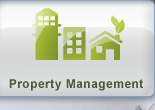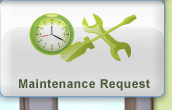Frequently ASked Questions.
When is my rent due and where can I pay my rent? Rent is always due on the first of each month and late as of 5 pm on the 5th. If the 5th falls on a Saturday, Sunday or legal holiday, rent is due by 5 pm on the next business day. Late fees are calculated at 10% of total monthly rental rate per month.
Our office is located in Fall Branch, Tennessee. We are open Monday through Friday, 9:00 am to 3:00 pm, and evenings and weekends by appointment for rental showings.
Please specify your rental address in the memo field of your check or money order.
Rent can be paid by mail to: PO BOX 312 Fall Branch, TN 37656
Rent can be paid in person at: 1714 Hwy 93 suite #12, Fall Branch, TN 37656
Rent can also be paid online or check by phone. Please contact Arbella Properties Inc. for details and account activation.
How do I get help for a maintenance problem?
You may submit your request through our website under tenant services, us by phone at (423)446-8154 .
How long should I wait to hear back from someone regarding a maintenance problem?
In a non-emergancy situation, please allow three days. If you have not heard from our office or vendor in three days, please contact Brenda Campbell directly.
What am I responsible for maintaining?
Residents are responsible for maintaining heating filters and fresh smoke detector batteries at all times. This may mean changing these items two to three times a year or as frequently as needed. Most residents in single family homes are responsible for maintaining their individual lawn care as well, to include watering, weeding, mowing, blowing and all general upkeep of the yard. Please refer to your lease agreement for further acknowledgement of yard duties.
When moving out of a Arbella Properties Inc. property, the resident responsibility grows substantially. Please refer to your lease agreement or call Arbella Properties Inc. directly for further detail.
Do I need approval to paint or change something in the home I am renting?
Yes! Any and all changes or modifications to the property must be requested in writing to Arbella Properties Inc.. These requests must be approved and sent back in writing to resident prior to any changes.
Do I need renters insurance?
Arbella Properties Inc highly recommends that all residents carry enough insurance to cover themselves and their personal property. Please consult with your insurance agent for further details.
What happens if I need to move before the end of my lease?
Please refer to your lease agreement for details on breaking a lease and contact Arbella Properties Inc. as soon as possible to discuss your situation in detail.
What do I do if I need to move?
You must always provide a written 30 day notice to vacate. These can be obtained on our website through your tenant portal, or in the office. Notices must be delivered a full 30 days prior to your vacating date. Once received by our office, the 30 days will begin.
Can I get a pet?
Pets are permitted at some, but not all, properties. Please refer to your lease agreement to see if pets are negotiable at your property, and for terms and conditions. If pets are negotiable, you must submit a request in writing to Arbella Properties Inc. to include the type, breed, sex and age of the proposed pet. Upon approval you must submit a non-refundable $200 pet. All of this must be done PRIOR to getting a pet.
What do I do If I have an emergency.
Examples of emergencies include active water leaks, flooding, no heat in winter, fire, gas odors etc. Contact our office at(423)446-8184 or (423)446-8156, including after hours and weekends. If water is leaking at kitchen/bath sink or commode, IMMEDIATELY shut off the water UNDER the sink or BEHIND the commode before calling our office.
For Fire, GAS or Natural Disasters, please call 911 First!
How long does the application process take?
Applications generally take 24 to 48 hours depending on the availability of your references. If you have not heard from us within 48 hours, please give us a call.
| Move-out Cleaning and Deposit Refund Requirements |
| Be sure to give proper notice! You will need to submit you intent to vacate in writing 30 days prior to wanting to move. A “Notice to Vacate” form is available through your portal, or you may submit one at our office.
It is your responsibility to call Arbella Properties Inc. when you expect to be finished cleaning so you can schedule a move-out inspection and return keys. Rent will be charged until keys are returned regardless of your stated move-out date.
Please provide your forwarding address so your deposit refund statement can be mailed to you.
Your refund statement will be mailed to you at the address provided within 30 days following your vacating the property and returning keys.
General Cleaning:
- Walls and baseboards should be washed – marks, scuffs, grease & grime removed.
- Remove all cob webs from walls & ceilings.
- Wall and/or ceiling vent and registers should be washed.
- Clean switch plates.
- Fireplace(s) should be cleaned of all debris.
- Light bulbs should be replaced as necessary.
- Blinds and/or window coverings cleaned.
- Everything must be removed from closets including coat hangers, and shelves cleaned.
- Carpet must be well vacuumed in preparation for shampooing. Carpet is required to be professionally shampooed.
- All floors must be cleaned and mopped.
- HVAC filter(s) replaced and smoke detector batteries replaced.
- Windows must be washed and sills dusted and cleaned with damp cloth and window runners and tracks clean.
Yard: - Must be mowed, all beds weeded, well groomed and watered.
- If pets, waste must be cleaned up.
- Trash in cans and placed out for pick-up.
- Patios and decks must be clean and swept.
- Storage areas must be empty and swept.
Garage: - Remove all personal items and garbage.
- Sweep floor and wipe shelving off.
Kitchen: - Clean refrigerator, shelves and freezer. Unplug and pull the refrigerator out away from the wall with door open
- Clean underneath and behind refrigerator. After cleaning, re-plug the refrigerator and leave it running.
- Clean cupboards, under sink and baseboards.
- Clean under burners, controls, rings, drip pans and stove top. Wipe down front and sides of range. Exhaust fan must be clean and grease free.
- Clean oven – be sure to have all traces of oven cleaner wiped free.
- Scour sinks and remove all stains. Disposal should be clean and in working order.
- Exterior faces of cupboards should be wiped down and grease free.
- Dishwasher must be clean and in good working order.
Bathrooms: - Tub, shower, basin and toilet should be cleaned and sanitized.
- Tile washed and grout cleaned.
- Glass doors cleaned and soap scum removed.
- Exhaust fans taken down and cleaned.
- Vanity and cabinets cleaned.
- Bathroom floors mopped and cleaned.
- Faucets and fixtures polished.
WHAT IS ORDINARY WEAR AND TEAR?
Typical definition of ordinary is “That deterioration which occurs based upon the use of which the rental unit is intended and without negligence, carelessness, accident or misuse, or abuse of the premises or contents by the tenant or members of his household, or their invitees or guests.”
In other words, ordinary wear and tear is the natural and gradual deterioration of the apartment or home over time, which results from a tenant’s NORMAL use of the apartment or home. For example, the carpeting in an apartment, or even the paint on the walls, wears out in the normal course of living. Carpets become threadbare, and paint peels and cracks. Even the most responsible tenant can’t prevent the aging process, and a court won’t make the tenant pay for damages resulting from that process.
Also, a court won’t hold the tenant responsible for damage arising from USING the apartment or home in a normal way. For instance, an Illinois owner held back part of the security deposit to pay for repair of nail holes left behind by a tenant who had hung some pictures. The tenant sued to get back his full security deposit. The Illinois court said the nail holes were the result of ordinary wear and tear. After all, hanging pictures is a normal incident of apartment living; it can reasonably be expected.
What’s Not Ordinary Wear and Tear?
A landlord can make a tenant pay for damages if the tenant helped the aging process along or didn’t use the apartment or home in a normal way. A carpet worn from people walking on it is something you have to expect. But a tenant who cuts a hole in the carpet or spills paint on it may be held responsible for the damage.
How can you tell what is and what isn’t ordinary wear and tear? There are three basic types of damages caused by a tenant that aren’t considered ordinary wear and tear. They are:
1. Negligence. If a tenant does something carelessly that the tenant should have known would cause damage, or if the tenant failed to do something that the tenant reasonable should have done to prevent damage, that’s negligence. In short, did the tenant act prudently to preserve the property.
- Failure to warn. Another form of negligence is where the tenant fails to take steps that could prevent damage to the apartment or home. Even the reasonable wear and tear exception shouldn’t insulate a tenant from responsibility if the tenant fails to let the management know when something goes wrong in the apartment that might later result in worse damage.
For example, if a window pane is cracked because of a faulty foundation, that’s not the tenant’s fault. But if the tenant doesn’t tell the management that the crack is letting in water and the carpet below the window gets water damaged, the management may be able to argue that this extra damage was caused by the tenant’s failure to inform the management of the problem.
2. Abuse/misuse. If the tenant knowingly or deliberately mistreats the property, or uses it for the wrong purposes, the damage the tenant causes isn’t ordinary wear and tear – it’s abuse and misuse.
For example, did the tenant slide furniture over an unprotected floor, causing gouges? Or did the tenant discolor the bathtub by using it to dye fabrics? Was the tenant an artist who failed to cover the floor as the tenant painted, leaving permanent stains on the carpet? Did the tenant paint the walls of the apartment or home black?
One court decision said a tenant had to pay for leaving an apartment carpet mutilated in an area around a wet bar, damaged by rust and mildew stains from plant containers, and covered with cigarette burns – some clear through the pad.
3. Accident. Sometimes damage occurs by mistake. The tenant party guest drops a drink on the new carpet, staining it. The tenant drops a heavy planter and cracks the tile floor. Or the tenant’s cleaning the light and the fixture falls and breaks. Or the tenant accidentally leaves the bathtub faucet on, flooding part of the apartment or home and staining wood floors and carpeting. Even though the tenant didn’t purposely damage the property, the management will withhold the cost of repair from the security deposit.
Other Factors
In evaluating whether apartment or home damage exceeds ordinary wear and tear, there are some other factors to keep in mind. They include:
Extent of damage. The exact type of damage may be as important as the extent of the damage when evaluating whether it’s ordinary wear and tear or not. For example, two or three nail holes in a wall may be considered ordinary wear and tear. But dozens of nail holes may be considered abuse. A few scratches on a wood floor are unavoidable. But a missing wood plank is negligence or abuse.
Length of residence. Certain things wear out over time. But over how long? The ordinary wear and tear on an apartment from a tenant who’s lived there only a short time should be considerably less than that of a tenant who’s lived there a long time. Say new carpet was installed before renting an apartment or home. It may be reasonable to expect that if a tenant lives there 10 years before moving out, everyday usage would leave it somewhat damaged. But if a tenant moves out after only three months and the carpet is ripped and stained, that’s unreasonable, and the management can probably charge the tenant for the damage.
Character and construction of building. An older building may be expected to undergo greater and more rapid deterioration than a newer building. For example, wooden windowsills in an older building may dry out, rot or crack over time through no fault of the tenant. But if the building is new, it is unlikely that the windowsills would crack without some carelessness on the tenant’s part (e.g., standing on the windowsill to hang drapes).
EXAMPLES OF WEAR AND TEAR VS. DAMAGES | Wear and Tear - Peeling/cracked paint. - Worn enamel in old bathtub. - Worn or cracked linoleum in place where appliances had been. - Cracked window pane due to faulty foundation and settling of building. - Carpet worn thin by people walking on it. - Door that sticks in humidity. - Small piece of wall plaster chipped. - Faded tile. - Fire damage due to faulty wiring. - Sink drainage slow due to old pipe system. - Floors need new coat of varnish. - Corner or piece of wallpaper coming loose because glue has aged. - Sliding closet doors stick. - Paint faded on kitchen walls. - Shower rod somewhat rusted. - Small amount of grouting in bathroom tile loose. - Faded window coverings. | Damages - Drawings on the walls (e.g., murals). - Chipped and broken enamel on bathtub. - Broken window caused by resident slamming window shut. - Holes in carpet from cigarette burns or carpet damaged by rust and mildew stains from tenant’s plant containers. - Large chunk of plaster ripped out of wall. - Painted-over kitchen or bathroom tile. - Missing fixtures; holes in ceiling where fixture had been removed. - Toilet backed up because tenant flushed cardboard or other object not intended to be flushed. - Floors gouged when moving furniture. - Wallpaper missing where tenant tore it off wall. - Sliding closet doors off track because track bent. - Walls burned in kitchen from burner turned too high when pot on stove. - Shower rod missing. - Tiles missing or cracked. - Torn window shade or broken blinds. | |








